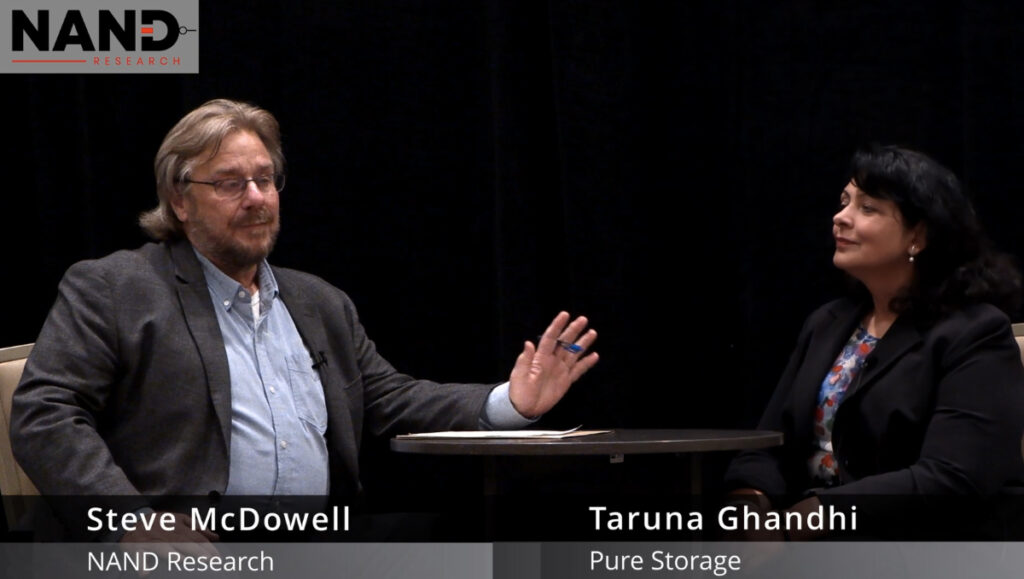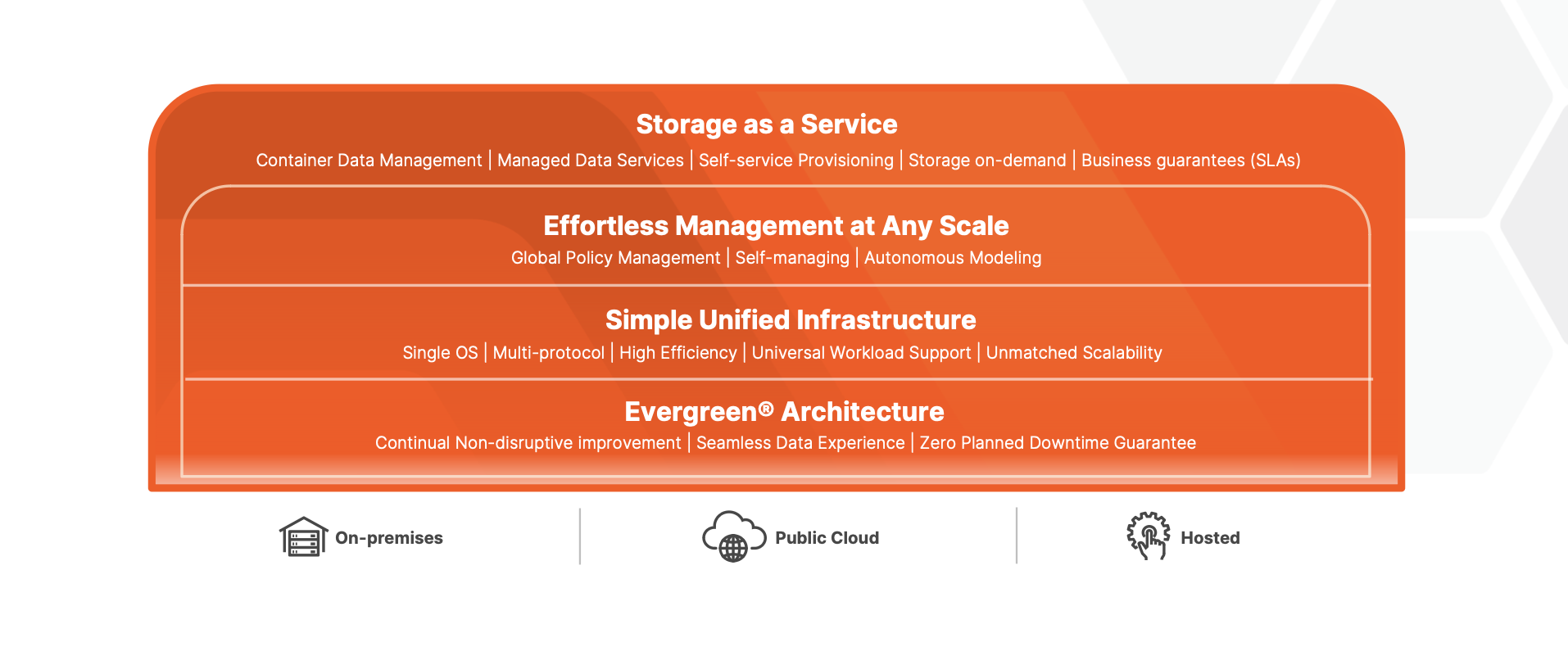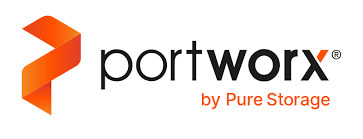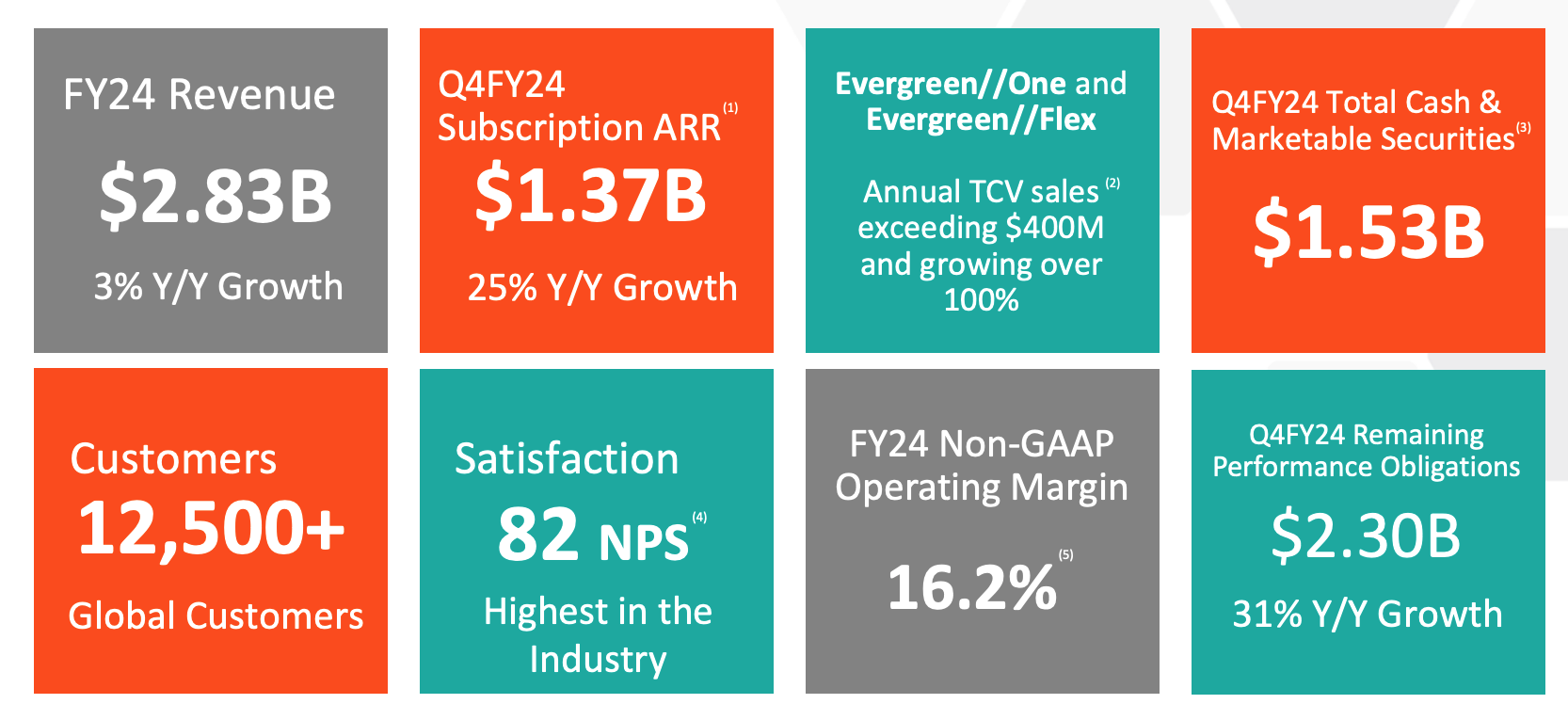Pure Storage is a company that prides itself on simplifying enterprise storage. This goes beyond just making storage management easier (though Pure excels here), Pure Storage wants to simplify the entire lifecycle of storage, from procurement through retirement.
Much of Pure’s digital experience is manifested by its Pure Storage EverGreen// family of offerings, delivered by Pure’s Digital Experience team.
At the recent Pure Storage Accelerate, NAND Research principal analyst Steve McDowell had a conversation with Taruna Gandhi, Pure Storage’s Vice President of Marketing for its Digital Experience business. Below is a transcript (edited for clarity) of that conversation — or check out the full video above!
Transcript
Steve McDowell
We are at Pure//Accelerate 2023 in Las Vegas, Nevada, and I’m with Taruna Gandhi, VP of Marketing for Pure’s Digital Experience Group. I’m intrigued by your title because most storage companies you talk to, they don’t talk about digital experience, but yet you have a whole group…
Taruna Gandhi
Yeah.
Steve
What does “digital experience” mean at Pure Storage?
Taruna
Digital experience…I’m part of the business unit that is, for lack of a better word, in the business of SaaS-ifying storage.
Steve
SaaS-ifying storage.
Taruna
Yes. We do all the subscription. We do Evergreen//One, Storage-as-a-Service, plus Evergreen//Flex and Forever, and Pure1, which is our AIOps control plane.
Steve
There’s a lot there. Pure likes to talk about simplifying the storage experience, which is not just about storage operations, configuring LUNs and provisioning volumes, it really starts with acquisition and goes all the way through the life cycle, and with some of the Evergreen stuff, that life-cycle could be a really long time.
Taruna
Yep. We have arrays that have been in service for 10 years now and still going.
Steve
In the Evergreen program… There’s an Evergreen program for rolling controller upgrades over the years…
Taruna
We actually have a portfolio of Evergreen subscriptions. So for customers who are adopting the cloud operating model and thinking about storage as a service, we have Evergreen//One and we have Evergreen//Flex for customers who want to buy the asset, but still want to take benefit of the consumption economics, and then Evergreen//Forever, that was the first subscription that we introduced that entitles customers to periodic upgrades and updates on both the software and the controller and the media and everything.
Steve
We analysts were allowed to talk to some customers yesterday, and I raised my hand and asked the customer a question, I said, “all of this Pure1 Evergreen stuff, does it make any sense? Is it a differentiator?” And he looked at me and he said, “It’s game changing for us. We couldn’t do what we do to deliver services to our customers without what Pure is giving us with Pure1 for sure”, and I learned… there were some announcements around this… I learned that there’s six service level agreements now as part of Evergreen, and you added one, which is really interesting, this week.
Taruna
Yeah, absolutely. So Evergreen//One: this is everything being driven by SLAs, and it has an SLA on uptime, it has an SLA on performance, it guarantees a 25% buffer capacity.
We never have any planned downtime for maintenance or upgrades based on our Evergreen architecture, and then earlier in January, we added an energy efficiency SLA, which I think is very unique in the industry where we are guaranteeing certain watts per tips based on the subscription level that the customer [inaudible 00:03:31]
Steve
And you have a sustainability dashboard as part of that.
Taruna
Absolutely. We have a sustainability assessment that the customer can take, and then the newest one is around ransomware recovery. So we announced a new SLA, it’s actually an add-on service to the core Evergreen service, and what this one does is it guarantees a clean storage environment that the customer can recover to, and that’s actually a very interesting one.
What we were hearing from the customers was that oftentimes when they have a ransomware attack, their array might get locked out, it might get taken out of production, maybe forensics has taken it, or law enforcement or insurance people and customers who are running very lean, especially storage as a service customers, may find that they are down arrays when they’re most vulnerable.
This new SLA guarantees that we will ship a clean storage environment to these customers within the next business day, well, next business day for US, EMEA and UK, and takes a little longer in APJ, but that’s the goal of it so that the customers have a clean environment to recover too.
Steve
I was talking to one of your engineers yesterday, and there’s a lot more to that than you’re letting on. You’re starting to do ransomware detection in the box, you’re essentially looking at entropy and deciding, maybe this is a block of data that’s been tampered with and raising alert and bubbling that up to Pure1.
Taruna
That’s an emerging area that we are using AI and machine learning to surface up some of these advanced signals that there might be an anomalous activity going on, but let’s take a step back. I mean, Pure announced SafeMode, it’s been a few years when SafeMode was announced.
Steve
And is that the immutable snapshots?
Taruna
That’s the immutable snapshots. And earlier this year we turned on SafeMode for everybody, but then we also found that customers were still struggling with, “I turned SafeMode on, am I good? Is this good enough? Do I have to do anything more?”
So we introduced this new data protection assessment, and what that does is, that was one of the announcements here at Accelerate is, it helps our customers benchmark their environment against our best practices, and within that data protection assessment, we surfaced up this new anomaly detection capability, which is using machine learning, so it’s looking at the customer’s environment, it’s understanding what’s normal for that environment, and then it’s looking at a specific signal on data reduction ratio.
Why data reduction ratio? Well, one of the things that happens in a ransomware attack is that your data gets encrypted, and so when that happens, you’ll see a dramatic fall in the data reduction ratio, and so that could be an advanced signal that we surface up to the customer. Now of course, it’s possible that somebody turned on an encryption and that’s what they wanted to do, or the DBA turned it on, then forgot to tell anybody, but certainly warrants more investigation, and that’s what we are alerting the customers to
Steve
If you don’t take action, basically you’re letting the customer decide, because as you said, there may be a real reason for that, a valid reason.
Taruna
Yeah. But the other thing that it does that I find is very interesting is, it will do full time and date stamp on when that anomaly started.
Steve
Okay.
Taruna
So if you are a customer and you know you’ve been hit by an attack and you are wondering, “should I go back a week, a day, a month? How much data loss am I willing to take?” This will actually take some of that guesswork out, because you can see when that anomaly started, so you can say, “okay, that’s the snapshot I want to recover from.”
Steve
And is this implemented on FlashBlade? FlashArray? Both?
Taruna
It’s implemented currently on FlashArray. But that’s normal for us. We start with FlashArray and then you’ll soon see it come for across the board.
Steve
What else did your team announce?
Taruna
We added to the FlashBlade//E family. It now has a full end-to-end use case of variant capacity for block file and object storage. We also announced as part of that, that there is a new Evergreen//One storage as a service tier for that E family, targeting the same kind of workloads, long term repositories and cold storage. There’s an Evergreen//One available for that, and we also announced that Evergreen//Flex will be available for those new offerings.
Steve
And what is Evergreen//Flex?
Taruna
Evergreen//Flex is… We introduced Evergreen//Flex last year at Accelerate. So it’s been in market for a year, and it’s a very interesting concept.
This is for customers who still need to own the asset, but they pay for the utilization of purchased capacity on a consumption basis.
Steve
Right. So, it’s not quite as a service.
Taruna
It’s not quite as a service.
Steve
I own the physical hardware.
Taruna
Yes, exactly.
Steve
So I have that CapEx spend.
Taruna
Yep. And especially if you’re a company who is measured on, say, for example, EBITDA, and you need those assets on books, but you like the consumption economics, it gives those customers a way to do it, but it does not come with SLAs because we can guarantee SLAs when Pure owns the gear and Pure deploys the gear, but Flex is a very good option for customers who want to optimize their budgets based on that.
Steve
I was talking to someone [inside Pure Storage] yesterday about your as-a-service offerings. Those offerings are meeting or beating expectations internally. It’s a popular thing.
Taruna
Yeah. If you look at our latest earnings, you can see that the subscription business has really taken off.
Steve
All right. So at Pure Storage you famously have a Net Promoter Score above 80, and I know Charlie takes it very seriously. I remember the first time I met Charlie, and this was four or five years ago. I asked him, “what are you focused on?” He said, “our NPS score dropped by one point and I got to get to the bottom of it”, and a big part of that is what your team delivers. How do you keep up with what the customers want? Is it shows like this? Do you spend a lot of time with your customers?
Taruna
Well, actually across the board, definitely shows like this, but we have different customer advisory boards, we meet with customers at other venues, we rely on our SE and field teams to bring those insights to us, we rely on our partners to bring that information to us. So yeah, I mean, the goal is to understand where the customers are feeling the pain and, how can we simplify it for them?
Steve
And I think that may be more difficult for your team than other teams. If I’m just building a storage product, it’s a rich competitive environment, and technology trends are well-defined. But Pure Storage is a leader in the digital experience, you really have no one to follow, you’re setting the bar.
Taruna
Well, we certainly like to believe that. Our goal with Evergreen//One has been to continue to differentiate it with these SLAs and not just SLAs, not just things on paper, like SLAs with real teeth. So if we don’t meet our SLAs, we will give customers service credit for missed SLAs, and we will take any remediation action that we will include even changing out the hardware or doing any onsite professional services work. We will actually take that on.
Steve
Excellent. So we got 12 months till the next Accelerate.
Taruna
Yes.
Steve
What’s your team focused on? Can you tease us a little bit?
Taruna
Wow. Yeah. So obviously anomaly detection that we introduced is our first foray to surfacing up these insights for the customer. We’ve always had some of that data for our support people, which is why they can proactively go fix issues before the customer notices, but you can expect that that might be an area that we will continue to focus on. The other thing, like I said, we differentiate Evergreen//One through our SLA, so the ransomware recovery one is the most recent one, which you can expect more of that to come, maybe other differentiated SLAs, sustainability has been a big differentiator for us, so we’re working on sustainability 2.0. I’m going to leave it at that. So something to look forward to.
Steve
Something to look forward to. I’ll be pinging you.
Taruna
It was awesome. Great talking to you.





